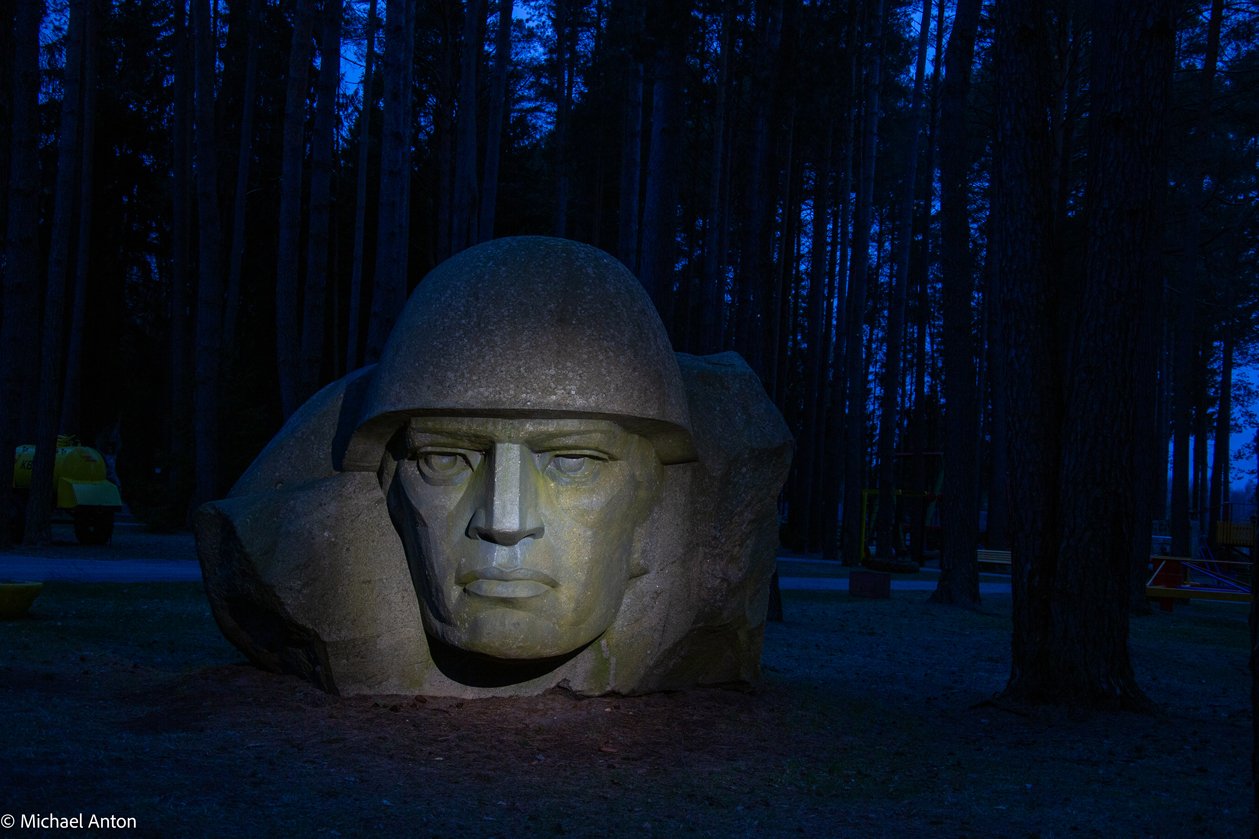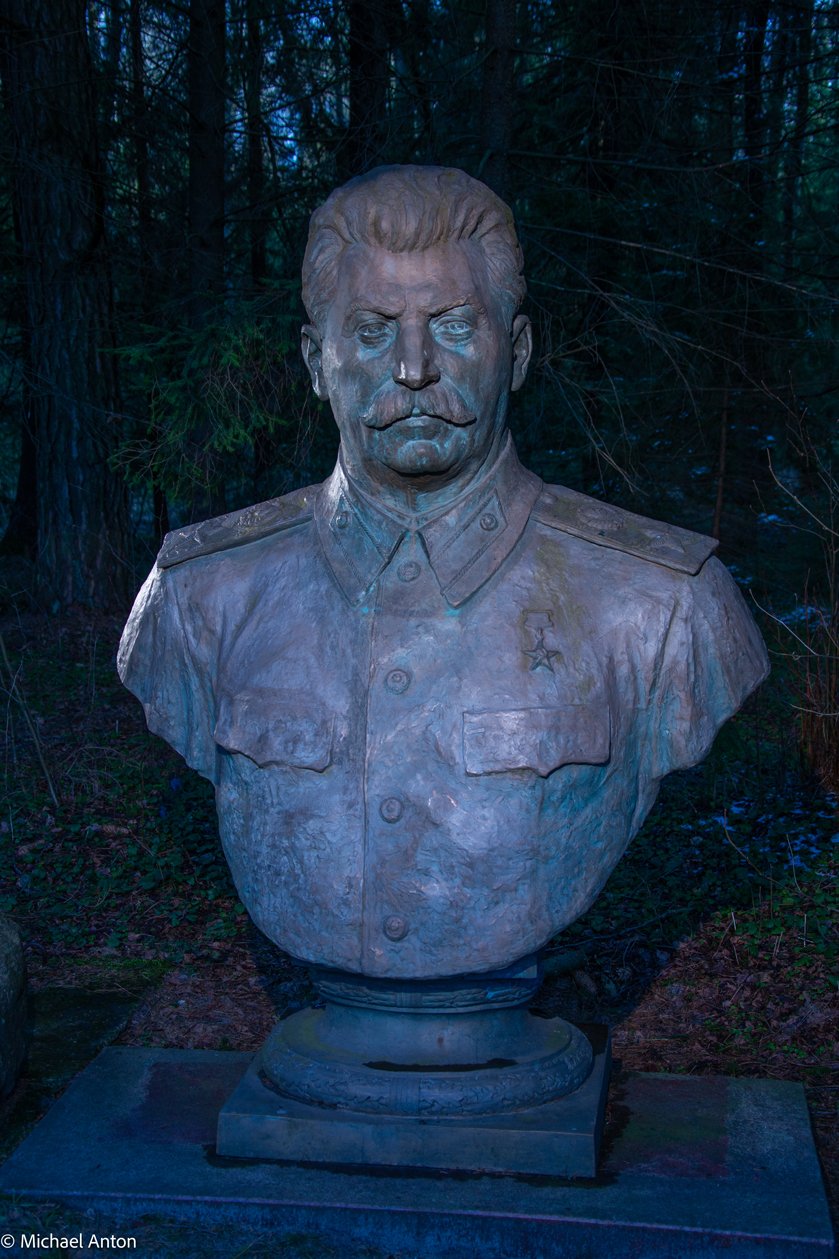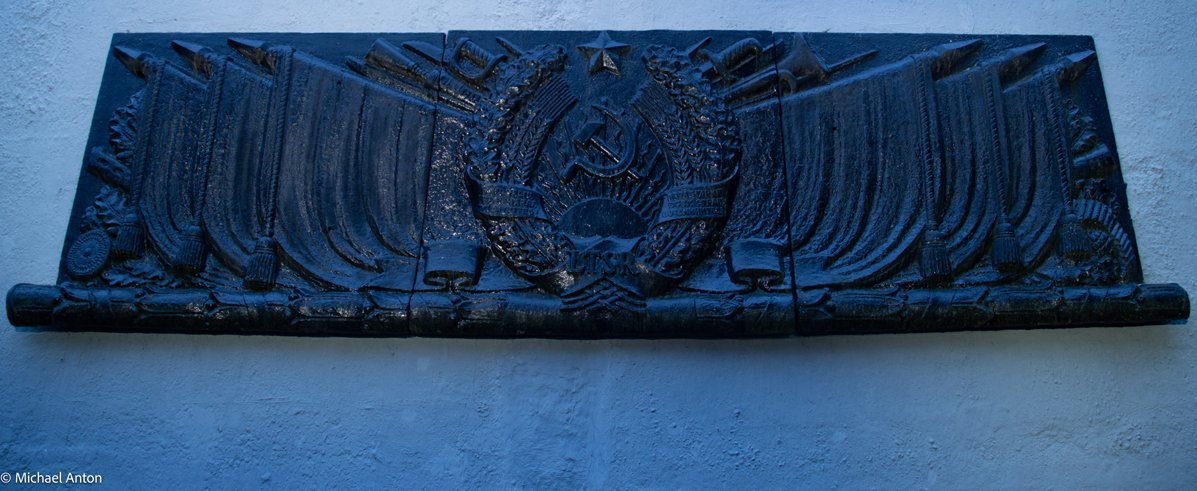TWILIGHT OF THE GODS:
Images From Gruto Parkas, Lithuania.
As statues of Zeus and Apollo were once testaments to a now dead theology, so did the 20th century create its own pantheon of deities now discarded.
Except that these gods were elevated mortals, whose likenesses had to be cast in stone and metal.
Here you will see several statues of Lenin, Stalin, Kapsukas (contemporary of Lenin and Lithuanian communist leader), General Baltusis Zemaitus, Felix Dzerzhinsky, and the king of the gods, Karl Marx.
Note on some of the statues: The original two-person statue of Lenin and Kapsukas had to be redone. In life the Lithuanian was taller than the Russian, but no one could be taller than Lenin. Back to the workshop so that Lenin’s legs could be added to. There is also a rare seated Lenin who was displayed in the central square of Druskininkai, the nearby spa town where people went for its healing waters.
Felix Dzerzhinsky, pictured in a long coat, was the Director of the Cheka, the first Bolshevik secret police. Through a number of name changes over the years, it ultimately became the KGB. Whether true or not, he is credited with having stated, “Better to kill 100 innocents than to let one guilty man go free.” Historians are still debating this.
Even strong generals can cry. Due to weather conditions the bust of General Baltusis looks as if the old soldier is weeping.
And finally, one of the first images you will see is a large statue of a Red Army soldier bearing a (Thompson style) submachine gun with a round magazine. This was built in 1947 (two years after the war ended) by German POWs. Even more than 10 years after the war, the Soviet Union kept German prisoners. Under the guidance of Soviet sculptor Penkovas, these Germans were compelled to make a huge tribute to the soldiers that had defeated them. When the statue came down in 1991, a bottle was found in its base with a list of the men who had made it. This was used over the course of several years to track them down, and a reunion was held.
Photographers note: An endeavor like this isn’t possible without the support of others. I’d like to express my deepest appreciation to Andrei Isachanka, my assistant who remained cheerful in all weathers and at all hours.
I am also deeply indebted to Richardas Bark, Marketing Director for Gruto Parkas as well as wearing a number of other hats, and all around great guy for letting me work after hours in the park.
And most of all history owes a great debt to Mr. Viliumas Malinauskas, creator of Gruto Parkas. When communism ended in Eastern Europe in 1991, many of these statues were discarded, and some were to be melted down for their metal. Mr. Malinauskas saved them from destruction, not out of any nostalgia for the U.S.S.R., but because this is part of Lithuania’s rich history.
And while one should never close the door entirely on any artistic endeavor, I do believe that barring unseen developments, my Cold War imagery that I’ve been working on since…well the Cold War, is now finished.

















